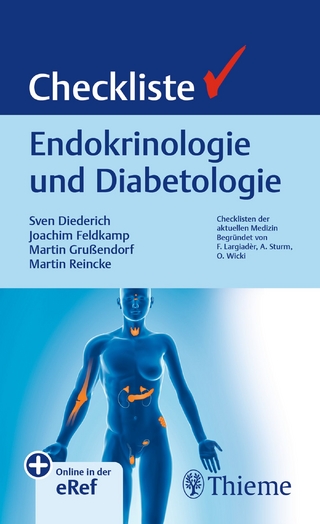
Brain Neurosecretory Cytokines
Springer-Verlag New York Inc.
9781461347095 (ISBN)
1 Neurosecretion of Cytokines by N. Paraventriculars and N. Supraopticus of Hypothalamus.- 1.1 The Isolation of Neurosecretory Granules from Bovine Hypothalamus and Neurohypophysis: Bio Assay Methods of Cytokine Identification.- 1.2 Identification of interleukins 1? and 1? in the Lysates of Neurosecretory Granules of Bovine Neurohypophysis and Hypothalamus.- 1.3 Identification of IL-2 in the Neurosecretory Granules of Bovine Neurohypophysis and Hypothalamus.- 1.4 Identification of IL-6 in the Neurosecretory Granules of Bovine Neurohypophysis.- 1.5 Identification of Tumor Necrosis Factor ? (TNF-?) in the Neurosecretory Granules of Bovine Hypothalamus and Neurohypophysis.- 2 Discovery of New Neurosecretory Cytokines: Proline-Rich Peptides Produced by N. Paraventricularis and N. Supraopticus of Hypothalamus.- 2.1 Isolation of Proline-Rich Peptides from the Neurosecretory Granules of Bovine Neuro-Hypophysis: Primary Structures, Mass-Spectral Characteristics, and Localization.- 2.2 Identification of PRP-1 in the Brain by Immunohistochemical Methods using Polyclonal Antibodies.- 2.3 Determination of PRP-1 in the Thymus, Lymph Nodes, and Heart using Monoclonal Antibodies.- 2.4 Interactions of PRP-1 with Coagulation Cascade Components : A Potential Role For PRP-1 in the Metabolism of Factor Xa/Antithrombin Iii Complex.- 3 interaction of PRP-1 with Cytokines, Hormones, and Neurotransmitters.- 3.1 Effect of PRP-1 and Lysates of Neurosecretory Granules on the Expression of Cytokines in Macrophages and Astrocytes.- 3.2 Effect of PRP-1 on the Expression of interleukins and Prolactin in Different Organs of Mice during Aluminum Neurotoxicosis.- 3.3 PRP-1 increases the Expression and Release of Human Growth Hormone in the Culture of Balb/C Mouse Fibroblasts.- 4 Antibacterial andAntiviral Activity of PRP-1 and Some Immunological Mechanisms of its Action.- 4.1 Effects of PRP-1 on the Survival of Mice infected with Different Strains of Gram-Negative and Gram-Positive Bacteria At Lethal Doses.- 4.2 Effects of PRP-1 on the Growth of Bacteria in the internal Organs of Mice infected with S. typhimurium.- 4.3 Effects of PRP-1 on Anti-Microbial Antibody Production in Mice infected with S. typhimurium and S. cholerae suis in Lethal Doses.- 4.4 Effect of PRP-1 on Bactericidal Activity of Macrophages.- 4.5 Effect of PRP-1 on the Secretion of Interleukin-1 by Peritoneal Macrophages of Mice infected with S. typhimurium in Sublethal Doses.- 4.6 Effect of PRP-1 on the Antigen-Presenting Function of Macrophages in Mice infected with S. typhimurium.- 4.7 Effect of PRP-1 on the Accumulation of Macrophages in Peritoneal Cavities of Mice infected with S. typhimurium.- 4.8 Effect of PRP-1 on the Viability of Macrophages in Mice infected with S. typhimurium.- 4.9 Effect of PRP-1 on interferon-? (IFN-?) Biosynthesis in Human Mononuclear Cells and the Replication of Encephalomyocarditis Virus in Cell Culture.- 5 Prp Regulation of T-Lymphocyte Development and Myelopoiesis.- 5.1 Influence of PRP-1 on interleukin-2-Dependent Functions of Human Lymphocytes in Culture and on the Proliferation of Jurkat Cells.- 5.2 Regulation of Thymocyte Differentiation by PRP-1 in Neonatal and Fetal Thymus.- 5.3 PRP-1 Is a Regulator of Myelopoiesis.- 6 Neuroprotective (Antineurodegenerative) Properties of PRP-1.- 6.1 Protective Effect of PRP-1 Against Snake Venom- induced Neuronal injury.- 6.2 Protective Effect of PRP-1 Against Trauma- induced Central and Peripheral Neuronal injury.- 6.3 Morphological and Biochemical Changes in Brain Microstructure in Crush Syndrome and Effect of Prp.-6.4 PRP-1 Protects Brain Neurons Against Aluminum (Al) Neurotoxicosis (Electron Microscopy Studies).- 7 Effect of PRP-1 on Tumor Cells.- 7.1 Effect of PRP-1 on the Morphology and Mitotic Activity of Neurinoma of Rat Noduli Gasser (NRNG) Cells in Culture (Electron Microscopy Studies).- 7.2 Changes in the Ultrastructure of L929 Tumor Cells Under the Action of PRP-1 in Vitro.- 8 Basic Biochemical Mechanisms of PRP-1 Action in Different Pathologies.- 8.1 Effect of PRP-1 on GFAP Biosynthesis in Astrocyte Culture (Immunocytochemical Data).- 8.2 Effect of PRP-1 on Caspase Activity of Murine Neuroblastoma N2A.- 8.3 Regulation of Membrane Phospholipid Metabolism by PRP-1 in Cardiopulmonary insufficiency.- 8.4 Influence of PRP-1 on Consequences of Ionizing Irradiation in Rats.- Discussion.- Summary.- References.- List of abbreviations.- Acknowledgements.
| Zusatzinfo | VIII, 188 p. |
|---|---|
| Verlagsort | New York, NY |
| Sprache | englisch |
| Maße | 178 x 254 mm |
| Themenwelt | Medizinische Fachgebiete ► Innere Medizin ► Diabetologie |
| Medizinische Fachgebiete ► Innere Medizin ► Endokrinologie | |
| Medizin / Pharmazie ► Medizinische Fachgebiete ► Neurologie | |
| Medizin / Pharmazie ► Medizinische Fachgebiete ► Onkologie | |
| Studium ► 1. Studienabschnitt (Vorklinik) ► Biochemie / Molekularbiologie | |
| Studium ► Querschnittsbereiche ► Infektiologie / Immunologie | |
| Naturwissenschaften ► Biologie ► Biochemie | |
| Naturwissenschaften ► Biologie ► Humanbiologie | |
| Naturwissenschaften ► Biologie ► Zoologie | |
| ISBN-13 | 9781461347095 / 9781461347095 |
| Zustand | Neuware |
| Informationen gemäß Produktsicherheitsverordnung (GPSR) | |
| Haben Sie eine Frage zum Produkt? |
aus dem Bereich


